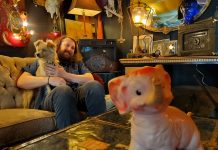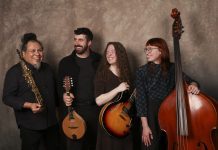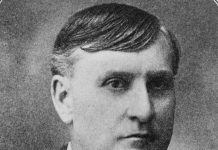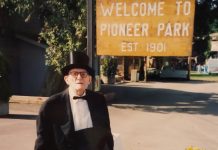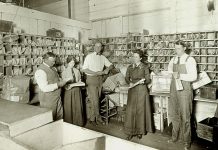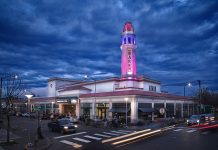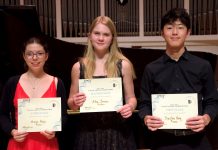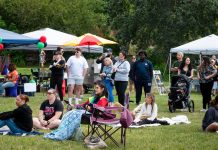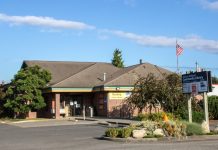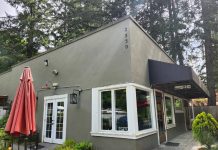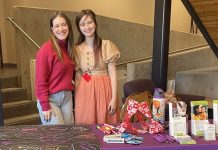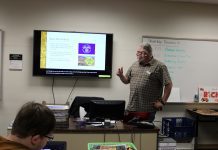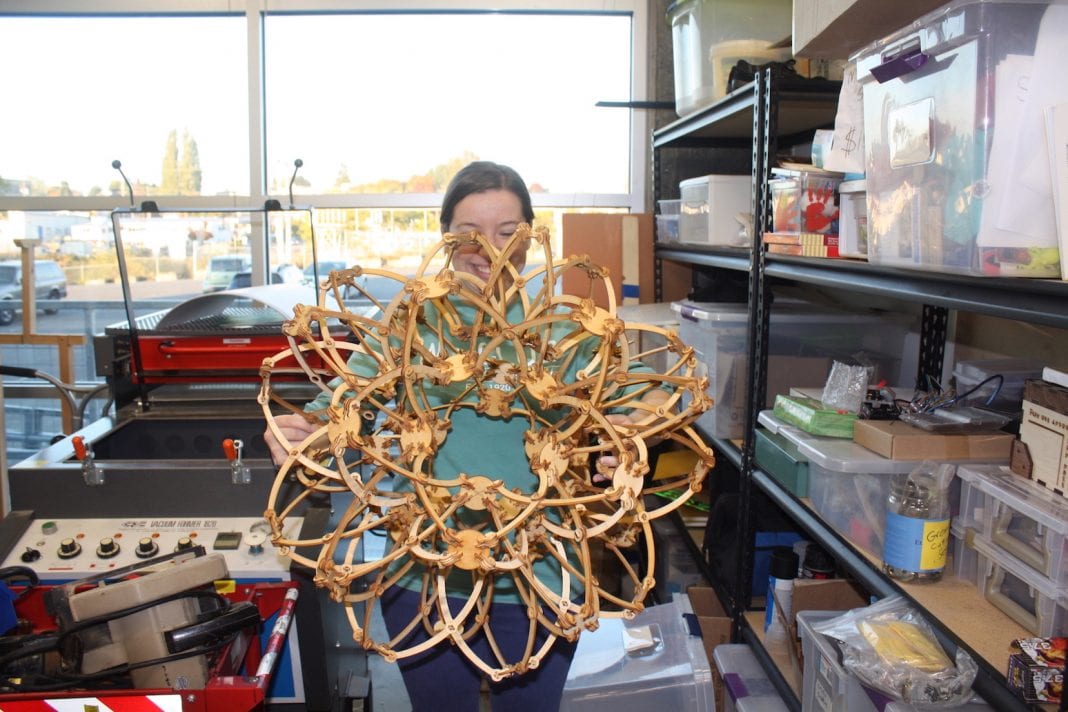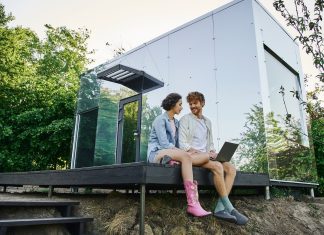About five years ago, Mary Elliot Keane, an occupational therapist, was working on making a pinky splint for a two-year-old. However, this task presented her with a particular set of challenges: since a splint is typically pretty hefty, with lots of velcro and such, it is difficult to make one that will fit a child that young.
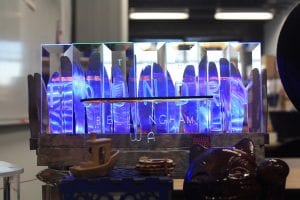
Instead of going the traditional route, Mary contacted one of her friends who knew how to use a 3D printer. “We designed a splint, and it was like a little canoe, but then had a little bird on it that kept her finger straight,” Mary says. “It slid on just like jewelry, and we made it pink.” The splint was a hit; the little girl loved it and would run around showing people her new “ring.”
After Mary made this splint, she was surprised about how easy it had been. She started delving into more information about 3D printing, which led to an involvement in similar activities, like laser-cutting and electronics, and finally the maker movement, a community of tech-intelligent creatives who all just like making new things. “I kind of just started learning about all the different technology and things that are available, and realized that it’s not as hard as you think,” she explains, “but it’s intimidating.”
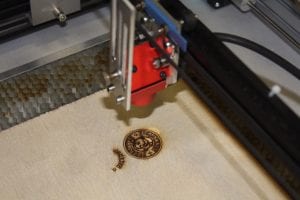
“First of all, it’s expensive to go ahead and buy equipment to try something – that doesn’t ever make any sense,” she says. “Then, it’s also intimidating to try and just sit there and read forums and whatnot when you have questions.”
Mary started thinking about the possibility of a place where people could come and try using the equipment or talk to others with expertise in the area. With this idea in mind, the Bellingham Makerspace was born.
To get the space started, Mary had to make some big sacrifices. “I wouldn’t recommend this, but I sold my house and bought equipment,” she laughs. “We haven’t been funded yet, but that’s something that I’m working on. I’m writing some grants and some things like that, and looking at trying to get some sponsorships and some grant money coming in so we can really roll out great programming.”

A huge focus of the Makerspace is community outreach and education; Mary currently works for the Ferndale School District as the Assistive Technology Director, so she has witnessed firsthand the difference that the knowledge of these tools makes. “They need these skills now,” she explains. “This isn’t future stuff. If we don’t teach them now, they’re going to be behind when they graduate.”
One of the grants she is hoping to get would focus on providing access to technology programs for students categorized as homeless. “There’s so much good that goes into this,” she explains. “If they participate in something, they’re making something physical. That self-satisfaction, the feeling like you actually have power over something in your environment is huge, when you can hold it in your hands and say, ‘I made this,’ and be proud of it.”
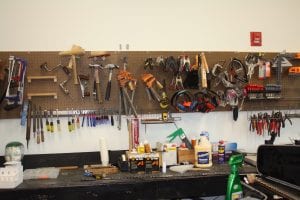
These skills can also provide students with valuable knowledge. “There’s a lot of effort being put into career pathways and showing at-risk students what the possibilities are. The problem with the current programs out there is that those students can’t envision themselves in that role because there’s so many barriers,” Mary says. “I sincerely feel that if we go ahead and make it novel, just a little bit on the mad scientist side so that it’s cool, and have them make something that they’re proud of, then perhaps they can envision themselves in that role or that job, and then actually choose it as a goal and work towards it.”
Though they haven’t been funded yet, the Makerspace still gets plenty done with the help of their volunteers. They offer classes on anything from epilog fusion laser cutting to drawing, and when they’re not holding classes, they let other groups use their classroom space for free. “We would love it if we could be like the hub,” says Mary. “We’ve made a bunch of contacts and things like that, so if anybody is like, ‘Hey, I wonder where I could do this,’ they can come and ask us and we’ll hook them up. It’s not about us, it’s about the community and providing resources for the community.”
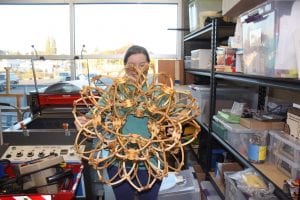
Above all, the Bellingham Makerspace is about creativity and learning. “I’m just a big nerd,” Mary says. That’s the other kind of thing that I think is really beneficial, especially for youth, showing them that making mistakes is just part of the design process. You’re not bad at this, just go measure again. No big deal. It kind of reframes that failure, so it helps people ideally approach other problems within their life a little bit differently and be a little more resilient and persevere.”
“We’re not just an artist place and we’re not just a bunch of old engineers, either,” she explains. “It’s a huge, wide variety of ages and skills. It’s a really interesting, fun, collaborative culture. Just coming down and spending time in the space, you get to see what other people are making and it’s super inspiring. Or, it’s the kind of thing where maybe you want to make something, but you have all of the skills except for one, so come down to the space and somebody will come and help you with it so that you can make this huge project that you never really would’ve been able to do on your own. It opens doors.”

